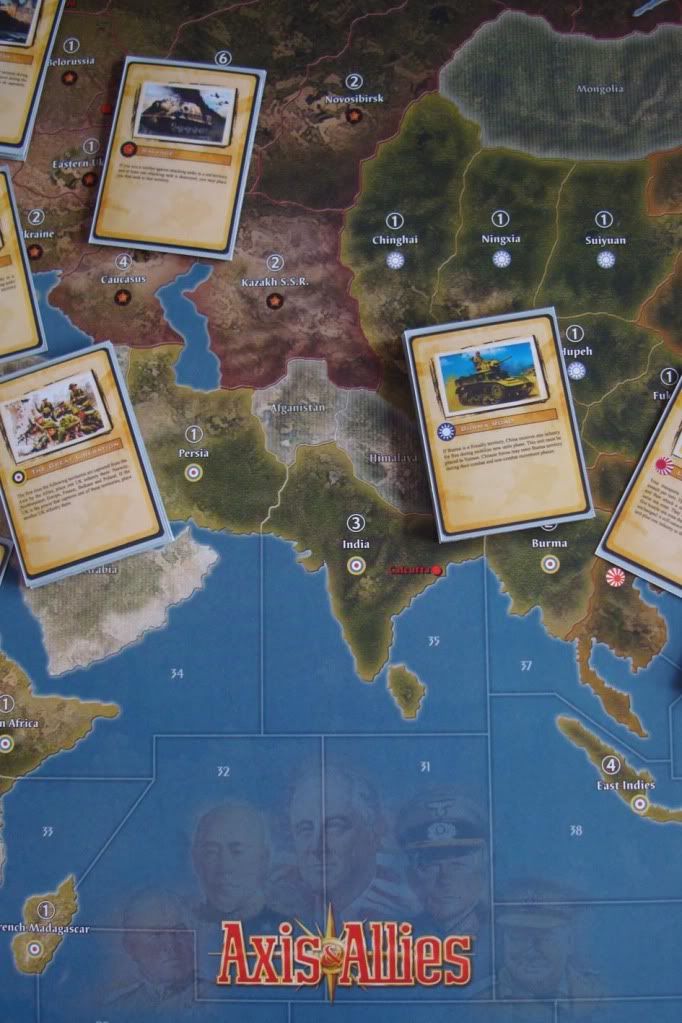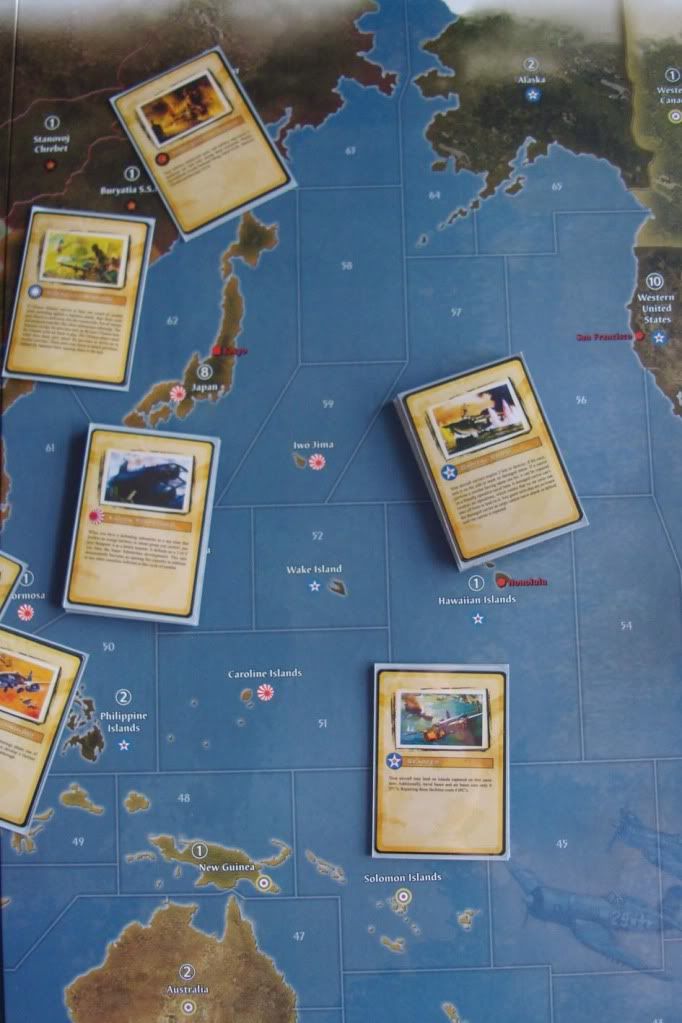British National Advantages
1. Night Bombing Raids
Due to their inability to provide fighter cover for their bombers the British used the darkness to their advantage, though this proved detrimental to their accuracy.
British bombers may choose to conduct a night bombing raid. The strategic bombing run may not be subjected to the “interceptors” rule but may still be targeted by AA guns as normal. In addition, strategic bombing raids conducted in this way roll two dice and choose the lower result. Heavy bombers roll one die only.
2. Joint Strike
The most powerful strike of the war was in the joint allied assault on Normandy. The planning required to launch this simultaneous invasion has never been equaled.
Once during the game at the start of a British turn, you may declare a joint strike. That round, you complete your turn as normal, except you must skip your combat move, and conduct combat phase. You may conduct non-combat moves as normal. On those phases of the U.S. turn, the U.S. Player uses your units in his or her combat move, and conduct combat phases, together with his own units. You and the U.S. player must agree on attacking casualties and on who takes possession of any captured territories, or the opposing player gets to choose. Antiaircraft fire is rolled separately against each nationality of air units; all anti-U.K. dice are rolled before any anti-U.S. die is rolled. A joint strike may not be called off once it is declared.
3. Enigma Decoded
The cracking of the German ‘Enigma Code’ by the British offered the allies an ace up their sleeve that could turn the tide in a key battle; however Germany would likely change its codes shortly thereafter.
Once per game, after Germany finishes its combat move phase, but before its conduct combat phase, you may make one special move. You may move any number of your units from one space into an adjacent space that was an empty sea zone or under the control of the Allies at the beginning of the turn. This movement must be either into and/or out of a space being attacked by Germany (Germany moving sea units to an empty sea zone does not count). If moving out of an attacked space, you must leave at least one unit behind in the space.
4. Technology Sharing
The United States and United Kingdom exchanged technology and techniques that combined to create machines that were more than the sum of their parts. The P-51 Mustang combined a British Engine with an American body and resulted in one of the most survivable and maneuverable fighters of the war.
During the research and development phase, the UK and US players may re-roll as many dice as the other player has breakthroughs. (If the US has made 3 breakthroughs, the UK may re-roll 3 of its dice, if it elects to roll that many)
5. The Sun Never Sets on the Empire
With possessions and holdings around the globe the United Kingdom was held together by a chain of bases, each filled with men ready to protect the crown’s possessions.
The United Kingdom may mobilize one infantry per turn at a port, airbase, or victory city that it controls. One infantry may be mobilized in Europe, and one may be mobilized in the Pacific.
6. The Great Liberation
The United Kingdom was safe harbor to the exiled governments of multiple nations under axis domination, these oppressed peoples were eager to help the war effort, if given the chance.
The first time the following territories are captured by the Allies, place one UK infantry there: Norway, Denmark, Belgum/Holland, Yugoslavia, Greece, and West Poland. If the UK is the power that captures one of these territories, place UK infantry equal to the IPC value of the territory there.








